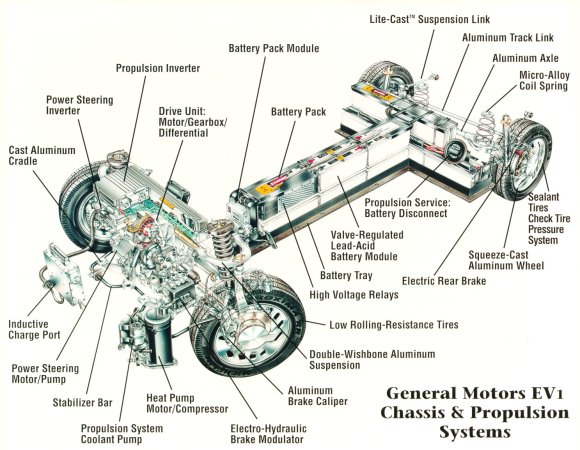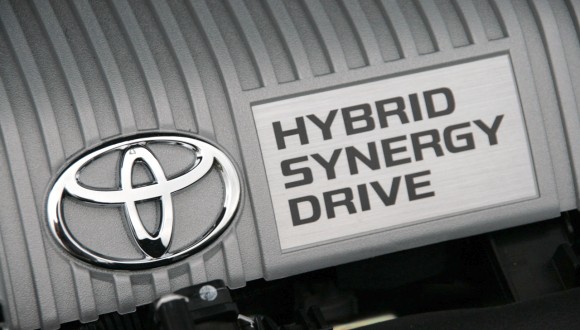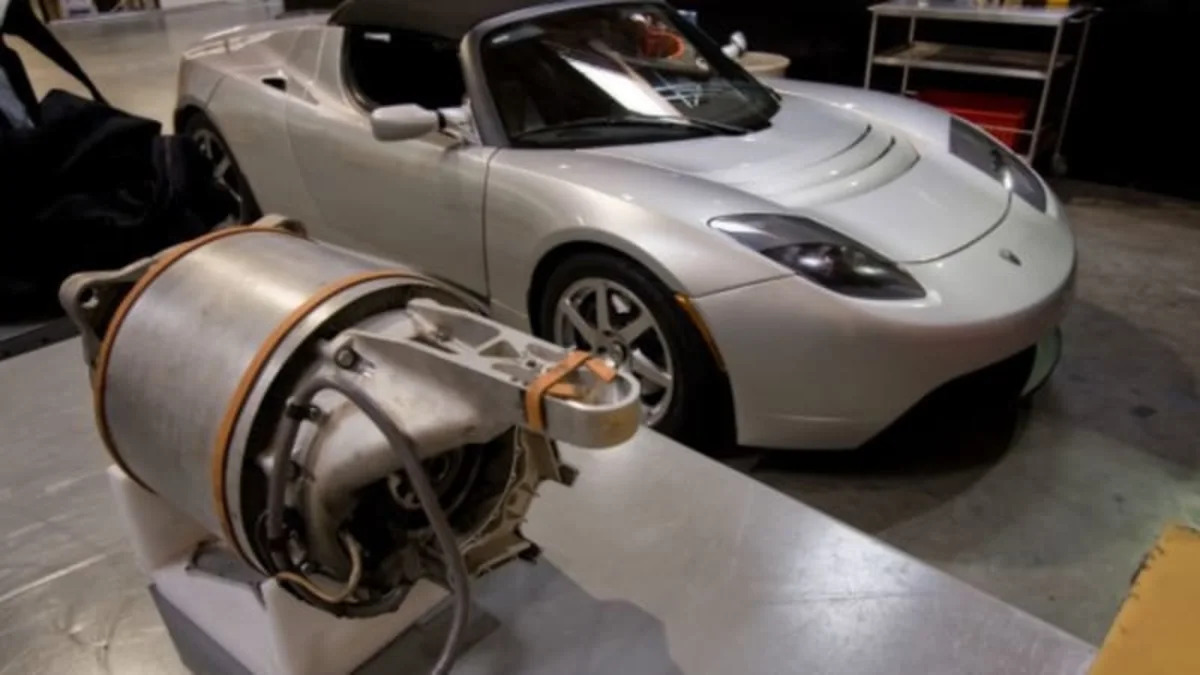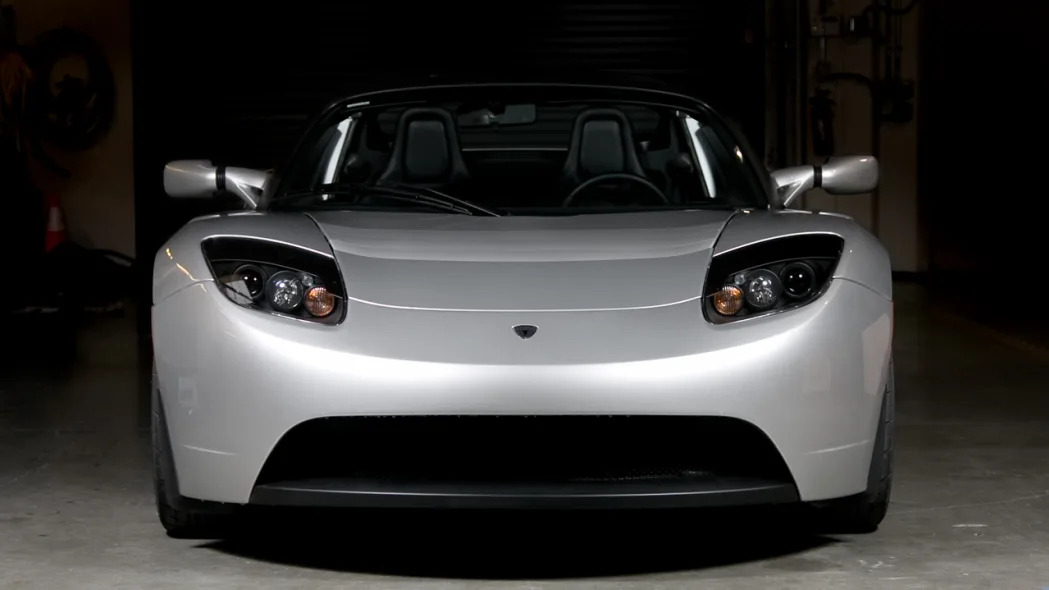Tesla Roadster with AC drive unit - Click above for high-res image gallery
 AC/DC? We're not referring to the classic rock band; we're taking a look at electric motors. In today's Greenlings post, we'll delve into the ins and outs of the powerplants that we hope will soon be transporting millions of people around the world to and fro. That said, there are lots of choices when it comes to selecting the proper motor for any given application, and the merits of each has been debated since before any of us were born.
AC/DC? We're not referring to the classic rock band; we're taking a look at electric motors. In today's Greenlings post, we'll delve into the ins and outs of the powerplants that we hope will soon be transporting millions of people around the world to and fro. That said, there are lots of choices when it comes to selecting the proper motor for any given application, and the merits of each has been debated since before any of us were born.
Way back in the late 1880s, Nikola Tesla dared to challenge powerhouse American inventor Thomas Edison by suggesting Alternating Current (AC) was a more desirable method to transfer electricity from one place to another than Direct Current (DC). So, which genius inventor was right? Suffice it to say that just about everything with a plug these days relies on AC current for power. But that was a long time ago, what's changed since then? Which is better for today's – and tomorrow's – electric cars?
Interestingly, while a lot has changed as far as AC and DC technology goes, the debate still rages on over which is better for specific applications, including automobiles. One of the main advantages that AC power holds over DC is its ability to easily change voltages with a transformer. This is an important distinction and one that holds true to this day. Why does it matter?
Here's the simple version: The total amount of power from an electrical system can be calculated by multiplying the voltage by the current. Therefore, the higher the voltage, the less current is required for a given amount of power. Without getting into the science of it all too much, high-voltage AC systems are generally more efficient than lower-voltage DC systems and the gap gets bigger as the transmission distance increases.

So, that's it, right? Since AC is the clear winner in terms of efficiency, it's the way to go? Not so fast. Even though the power coming from the wall through an electric car's plug is Alternating Current, the car's batteries (or ultracapacitors or solar cells or hydrogen fuel cells) give off Direct Current. This means that more expensive electronic doohickery is needed to convert the DC power to AC power, and, since there are not a few hundred miles of wiring to travel, the efficiency benefits of the high-voltage low-current nature of AC is somewhat mitigated.
Today, there are multiple kinds of DC motor technologies on the market, including series wound motors, Permanent Magnet motors and Brushless motors. Each type of DC motor has its advantages. Naturally, the more efficient and powerful the motor, the more it probably costs. Even relatively inexpensive series wound DC motors, though, are well-known for producing a ton of torque right off the bat, and they are also readily available on the open market to anyone looking to create their own electric car conversion.
Permanent Magnet DC motors make lots of power and are often used in low-cost electric car conversions, but they also use components (brushes and commutators) that naturally wear out over time and will eventually need to be replaced. Brushless DC motors do away with many of these wear items and generally run very cool, which means they can last for a very long time. Downsides to Brushless DC motors include higher initial costs and the extra electronics required to make them function.

So, what's currently (no pun intended) being used in mainstream eco-friendly cars and trucks? Modern hybrids generally rely on Brushless DC motors for motive power while the now-discontinued EV1 from GM, the current Tesla Roadster and the upcoming Chevy Volt all use AC drives.
Can you tell where all of this is going? After all these years, there's still no simple answer to the AC versus DC argument for electric cars. Which technology is best really depends on the application after considering variables like price, desired power and desired range. No matter what kind of electric motor is used, one thing remains constant: a noticeable lack of emissions exiting the vehicle's tail pipe.



Sign in to post
Please sign in to leave a comment.
Continue